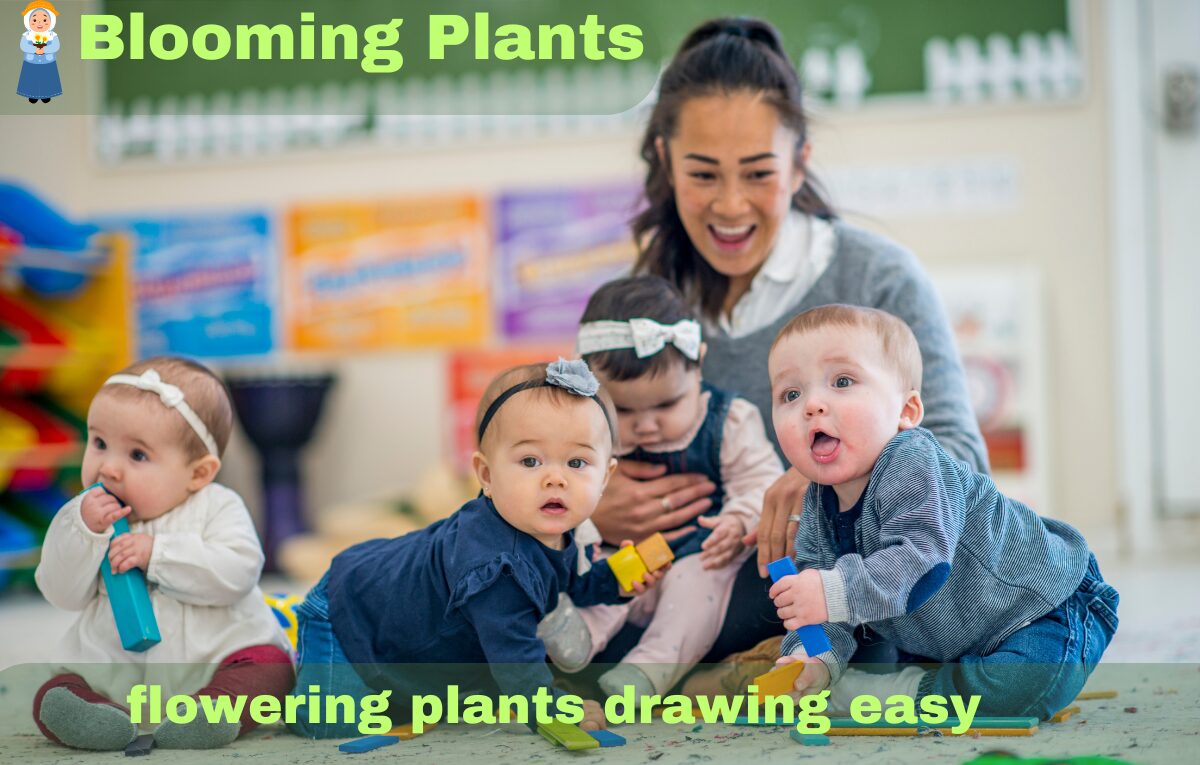Drawing flowering plants can be a relaxing and rewarding activity for artists of all levels. Whether you’re a beginner exploring your artistic side or someone looking to improve your skills, learning how to draw flowering plants is easier than you think. This guide will provide a detailed, step-by-step approach to creating beautiful flowering plant drawings with practical tips, examples, and tools to get started.
Why Drawing Flowering Plants is Easier Than You Think
Flowering plants are among the most versatile subjects in art. Their natural shapes, varying patterns, and vibrant details make them ideal for practice and creativity.
Simplicity in Shapes
Most flowers and leaves can be broken down into basic shapes like circles, ovals, and lines. This makes them beginner-friendly and helps build foundational skills for other artistic endeavors.
Relaxation and Creativity
Drawing plants can be meditative, encouraging mindfulness and reducing stress. Plus, the freedom to interpret flowers in your style allows endless creativity.
Practical Applications
From educational illustrations to home decor, flowering plant drawings have many uses. They can even serve as thoughtful gifts.
Tools and Materials for Easy Flowering Plant Drawings
Before you begin, gather the following tools:
Essential Tools
- Pencil: For sketching outlines and adding shading.
- Eraser: To remove mistakes and refine details.
- Drawing Paper: Provides a smooth surface for your work.
Optional Tools
- Fine-tip markers for bold outlines.
- Colored pencils or watercolors for vibrant finishes.
- Blending stumps for smooth shading effects.
Setting Up Your Workspace
A well-lit, clutter-free area ensures comfort and focus while drawing. Organize your tools for easy access.
Step-by-Step Guide to Drawing Flowering Plants
Step 1: Start with Basic Shapes
Begin by sketching the basic structure of your flowering plant.
- Use circles for blooms and lines for stems.
- Add ovals or teardrop shapes for leaves.
- Keep pencil strokes light for easy adjustments.
Step 2: Refine the Details
Outline petals, add veins to leaves, and include textures like ridges on stems. Focus on symmetry and proportion for realistic results.
Step 3: Final Touches
Trace your pencil lines with a fine-tip marker and erase the sketch marks. Add colors, shading, and highlights for a polished look.
Easy Flowering Plants to Draw
Tulips
Tulips are elegant yet simple to draw. Their oval-shaped petals and smooth stems make them perfect for beginners.
Daisies
With a circular center and long, thin petals, daisies are straightforward and offer plenty of room for creativity.
Sunflowers
Their large, round blooms and pointed petals are eye-catching and fun to illustrate.
Coloring Techniques for Flowering Plant Drawings
Base Coloring
Start with light colors and gradually build darker shades for depth. This creates a realistic appearance.
Blending
Use blending tools or fingers to soften transitions between colors. This adds a smooth, professional touch.
Highlighting
Leave small white areas to mimic sunlight hitting petals or leaves. This enhances the drawing’s vibrancy.
Common Mistakes to Avoid
Overcomplicating the Sketch
Stick to basic shapes and gradually add details. Overloading the design early can lead to frustration.
Ignoring Proportions
Ensure the size of petals, leaves, and stems aligns naturally. Use guidelines to maintain balance.
Neglecting Practice
Regular practice is key. Don’t be discouraged by initial attempts—progress takes time.
Advanced Techniques for Flowering Plants
Realistic Textures
Experiment with textures like rough bark, smooth petals, or fuzzy stems using varied strokes.
Perspective Drawing
Practice drawing plants from different angles, such as top-down or side views, for a dynamic presentation.
Mixed Media
Combine pencils, markers, and paints for unique, multidimensional effects.
Using References Effectively
Observing Nature
Study real plants for inspiration. Observe their patterns, colors, and textures closely.
Online Resources
Websites like Pinterest or Unsplash provide excellent references. Save images that match your vision.
Botanical Illustrations
Examine professional artworks to learn techniques and styles that resonate with you.
Incorporating Flowering Plant Drawings in Projects
Educational Uses
Label plant parts for biology lessons. This combines art and learning effectively.
Home Decor
Frame your drawings to create personalized wall art or greeting cards for loved ones.
DIY Crafts
Turn your illustrations into stickers, bookmarks, or gift wraps for creative projects.
Benefits of Drawing Flowering Plants
Skill Development
Enhance hand-eye coordination, attention to detail, and artistic confidence through regular practice.
Stress Relief
Drawing helps clear the mind and fosters relaxation, making it a therapeutic hobby.
Personal Expression
Customize your art to reflect your style, mood, or favorite flowers, adding a unique touch to every piece.
FAQs
What is the easiest flower to draw?
Daisies and tulips are great starting points due to their simple shapes and minimal details.
Do I need expensive tools?
No, basic tools like pencils and paper are sufficient for beginners. Advanced tools can enhance your work but are not necessary.
How can I improve quickly?
Practice regularly, use references, and experiment with different styles to refine your skills.

